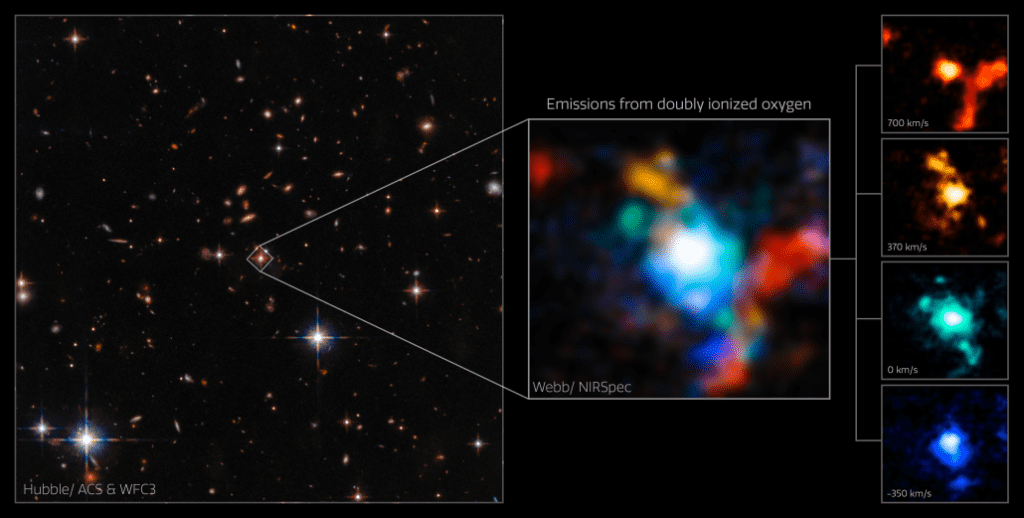The James Webb Space Telescope is again giving us an unprecedented glimpse into the history of the universe. New research led by Johns Hopkins University scientists is letting us see how galaxies came together to form the modern universe.

The images that made such research possible was one of 13 “early look” projects selected in a global competition meant to decide where to point the telescope during its first month of operations. They capture a cluster of galaxies congealing around a red quasar formed around a massive black hole.
Galaxy-to-be
“We think something dramatic is about to happen in these systems,” said co-author Andrey Vayner, a Johns Hopkins postdoctoral fellow who studies the evolution of galaxies. “The galaxy is at this perfect moment in its lifetime, about to transform and look entirely different in a few billion years.”
Previous observations of this area of space, using the NASA/ESA Hubble Space Telescope and the Near-Infrared Integral Field Spectrometer instrument on the Gemini-North telescope, did spot the quasar and identified the possibility that it sat at the core of a galaxy-in-formation. But our devices up to now weren’t capable enough to see this structure in high resolution, so we didn’t know what to expect.
The data from Webb revealed that it was not just one galaxy swirling around the quasar — but at least three. Due to the distances involved, around 11.5 billion light years away, the images are showing us the universe as it was in the distant past, one of the earliest stages of our universe’s formation.
“With previous images we thought we saw hints that the galaxy was possibly interacting with other galaxies on the path to merger because their shapes get distorted in the process and we thought we maybe saw that,” said co-principal investigator Nadia L. Zakamska, a Johns Hopkins astrophysicist.
“But after we got the Webb data, I was like, ‘I have no idea what we’re even looking at here, what is all this stuff!’ We spent several weeks just staring and staring at these images.”
The galaxies are moving at very high speeds around the quasar, suggesting that they together contain a huge amount of mass. Although such galaxy-formation areas were likely common in the universe’s distant past but, according to the team’s estimates, this might be one of the densest galaxy-forming areas to have ever existed.
The quasar at the center of the structure is blindingly bright, one of the most powerful ever seen from such a distance. It is, essentially, a black hole that is accumulating mass from the gas clouds around it. Its apparent red hue is caused by the clouds of gas sitting between the quasar and Earth.
“What you see here is only a small subset of what’s in the data set,” Zakamska said. “There’s just too much going on here so we first highlighted what really is the biggest surprise. Every blob here is a baby galaxy merging into this mommy galaxy and the colors are different velocities and the whole thing is moving in an extremely complicated way. We can now start to untangle the motions.”
The researchers are now working on scheduling follow-up observations of the cluster. More data from here would allow us to better estimate its physical properties. In turn, this could help us better understand the early days of galaxy clusters and how the supermassive black holes they revolve around shape this evolution.
The paper “First results from the JWST Early Release Science Program Q3D: Turbulent times in the life of a z∼3 extremely red quasar revealed by NIRSpec IFU” will be published in the journal Astrophysical Journal Letters and is available on the arXiv preprint repository.


